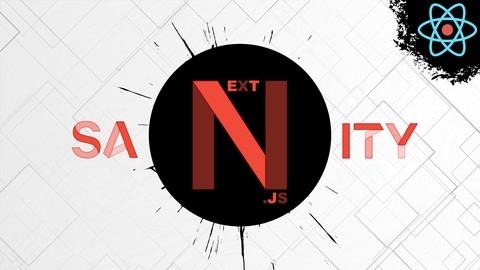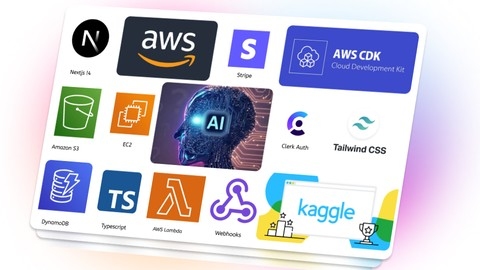Vercel is a powerful platform for deploying and hosting web applications, making it a valuable tool for developers seeking to build fast, reliable, and scalable web experiences.
Learning Vercel can open doors to new opportunities and empower you to create impressive, serverless applications.
But finding the right Vercel course on Udemy can be a challenging task, as the platform offers a multitude of choices.
You’re likely searching for a course that covers the key features of Vercel, offers hands-on projects, and provides a solid understanding of serverless architecture.
We’ve analyzed countless Udemy courses and confidently recommend Next.JS with Sanity CMS - Serverless Blog App (w/ Vercel) as the best overall.
This course is a comprehensive guide to building a fully functional, serverless blog application using Next.js and Sanity CMS, integrating all the key features of Vercel.
You’ll gain hands-on experience with setting up Next.js applications, integrating with Sanity CMS for content management, and deploying your project using Vercel’s powerful platform.
While this course stands out, we understand that everyone has different needs and preferences.
This is just the beginning of our recommendations.
Keep reading to explore other fantastic Vercel courses on Udemy that cater to diverse skill levels and learning goals.
Next.JS with Sanity CMS - Serverless Blog App (w/ Vercel)
This course will guide you through building a serverless blog application using Next.js and Sanity CMS.
You’ll start by setting up the Next.js app and integrating React Bootstrap for styling.
The course covers separating components like the navbar and using absolute paths for better organization.
Moving on, you’ll dive into Sanity, learning how to define content types, set up the Sanity client, and fetch blog data to display on the site.
You’ll work with various field types like dates, images, and author information, implementing validation rules along the way.
The course teaches you to create detailed blog pages by rendering Sanity’s rich content, including code snippets and images.
You’ll explore advanced image handling techniques like cropping and positioning.
For the blog list view, you’ll implement client-side fetching using useSWR and an API route.
This section covers filtering, ordering, and pagination functionalities to enhance the user experience.
The course also covers crucial aspects like fallback pages, theme toggling with a provider, and Sanity’s preview feature for real-time content updates.
You’ll learn how to deploy both the Sanity studio and the Next.js app, including setting up preview in production.
Throughout the course, you’ll work on improving styling with techniques like font integration and layout enhancements.
The instructor also addresses important topics like handling package locks and testing your application.
AI For JavaScript Developers (OpenAI, Embeddings, Vercel AI)
The course starts by introducing you to generative AI and large language models (LLMs).
You’ll learn the basics of building with OpenAI, including project structure, chat completions, and handling conversation state for AI chatbots.
The course dives deep into important concepts like tokens, system messages, and providing knowledge to the LLM.
It also covers how to get structured JSON output and use OpenAI’s function calling capabilities.
A significant portion is dedicated to vector stores and embeddings, which are crucial for storing and querying data effectively with AI.
You’ll learn how to store PDFs in a vector store index and query it effectively.
The course even covers fetching real-time data, which is essential for building dynamic AI applications.
The highlight is a hands-on project where you’ll build a PDF chat bot.
You’ll clone the repo, understand the project structure, upload and parse PDF files, store them in a vector store index, and build a chat API endpoint.
The course also teaches you how to deal with token limits, a common challenge when working with LLMs.
Throughout the course, you’ll work with tools like Node.js, VSCode (optional), and the Vercel AI SDK.
The course covers important AI concepts like hallucinations and providing knowledge to the LLM, ensuring you have a solid understanding of the underlying principles.
Building a FullStack AI SaaS Web App on AWS and Vercel
The course covers building a full-stack AI SaaS web app on AWS and Vercel.
You’ll start by setting up your AWS environment, including creating an IAM user and bootstrapping the AWS Cloud Development Kit (CDK).
The machine learning portion dives into working with Kaggle datasets on an EC2 instance for training and testing models.
You’ll learn how to start the machine learning model, perform inference, and stop it when needed.
For the backend, you’ll create database, Lambda, and S3 stacks using AWS services.
This includes setting up a dummy user, handling S3 put events, integrating Simple Email Service (SES) for email functionality, and implementing image modification and credit updating features.
The frontend development focuses on setting up the Vercel environment, creating pages like the homepage and product page, integrating with Clerk for authentication, and implementing Stripe for payment processing.
You’ll also work on fetching products, handling payment routes, and allowing S3 uploads.
Throughout the course, you’ll gain hands-on experience with various AWS services like EC2, S3, Lambda, SES, and the AWS CDK.
You’ll also work with technologies like Kaggle for machine learning datasets, Clerk for authentication, and Stripe for payments.
The course covers integrating all these components to build a functional AI SaaS web application.



